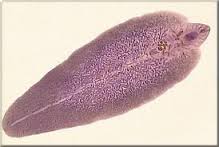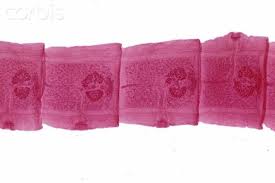Description and Size
Overview
Platyhelminthes are flat worms that lack a body cavity (coelom), are unsegmented, and bilaterally symmetrical. This constrains its movement and contributes to the flattened shape. Some are free living, but many are parasitic. Most parasitic flatworms fall into two classes: Trematoda (flukes) and Cestoda (tapeworms).
Flukes
These flatworms can reach a length of 30 mm and a width of 13 mm. They are leaf-shape (see image below) and complex life cycles, with larval stages parasitizing one or more species that are different from host of adults. Larval stages of some medically important species include miracidium, redia, cercaria, and metacercaria. Most trematodes are endoparasites. They include several parasites that have an enormous impact on human populations, such as human liver flukes and the blood fluke, Schistosomiasis spp.

Tapeworms
These flatworms are distinguished by a head (scolex) that it uses to attach to the mucosal tissues of a host’s intestines (see image below). It has small sections that are called proglottids (house the reproductive structures) that can break off and migrate to various parts of the body (see image below). Most belong to the genus Taenia, which cause “taeniasis” in humans. Dogs and cats can be affected by Dipylidium caninum, and fish can be affected by Diphyllobothrium spp. They can range in size from about 1mm (0.04 inch) to about 15 m (50 feet) depending on the species, host, and other conditions.

